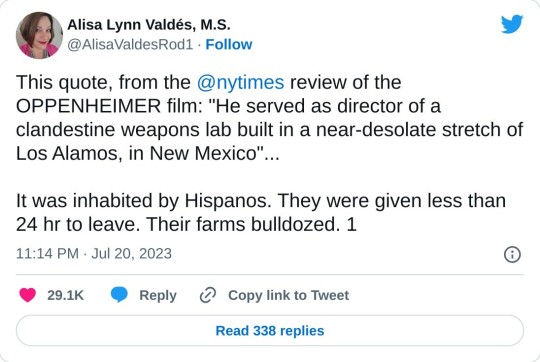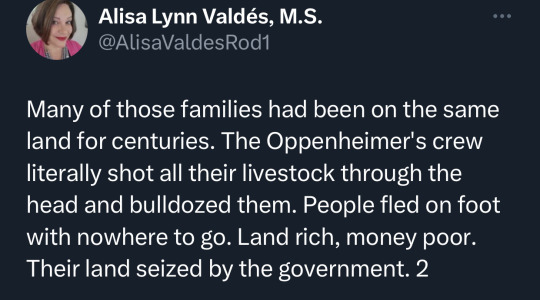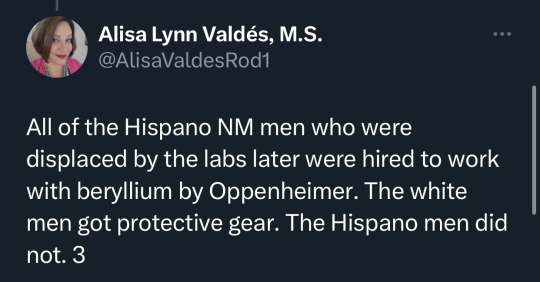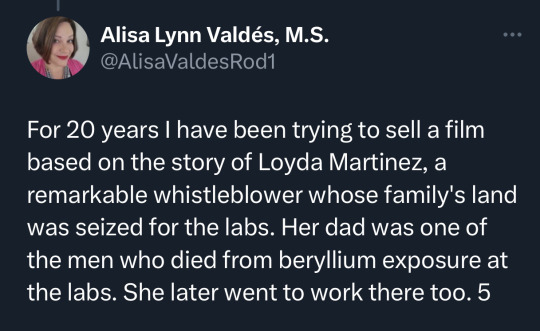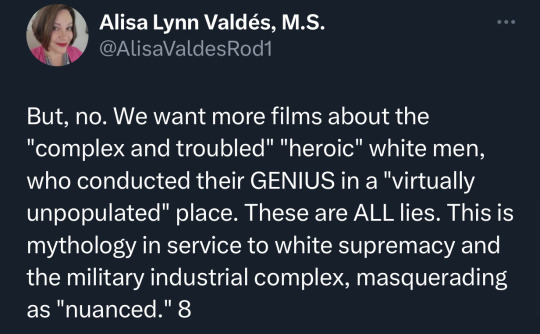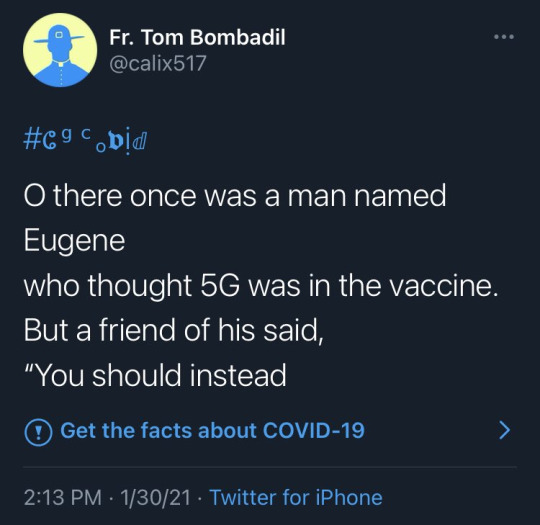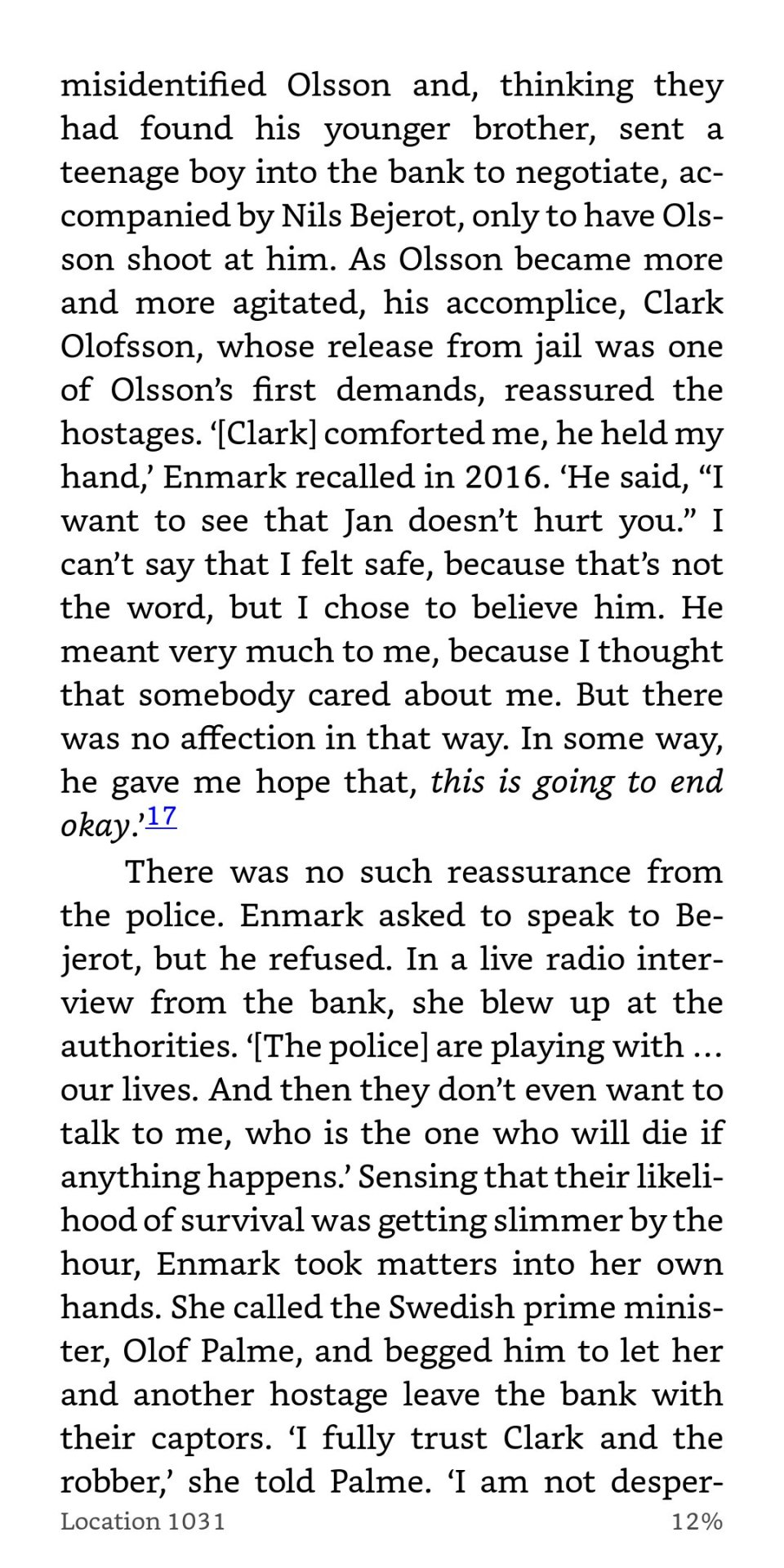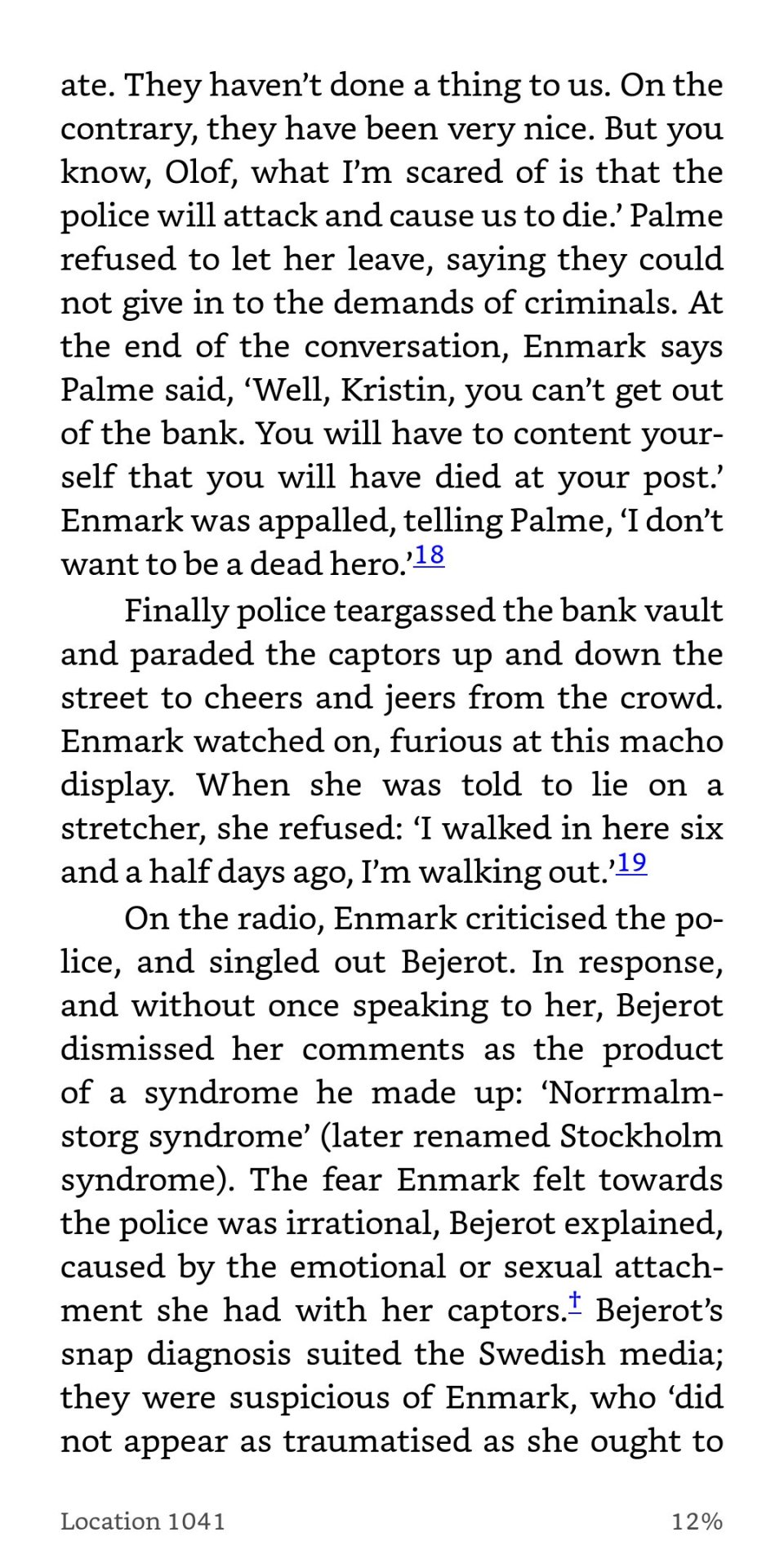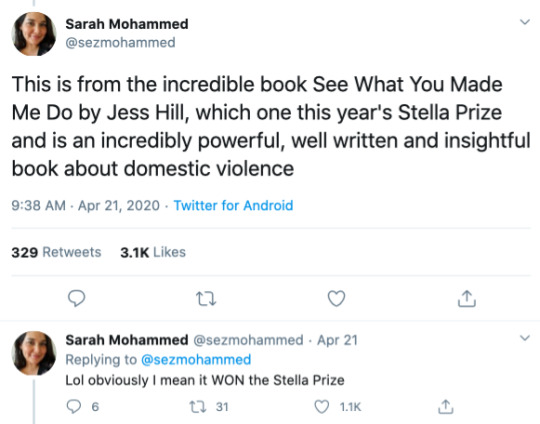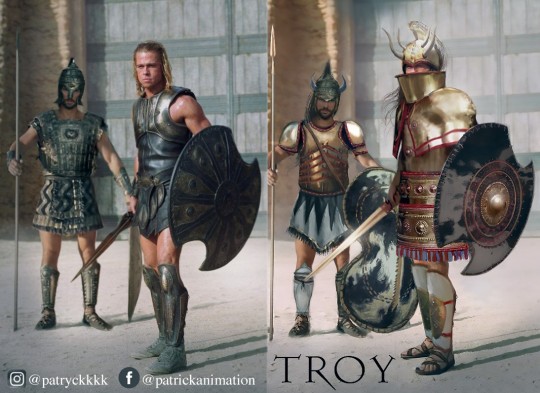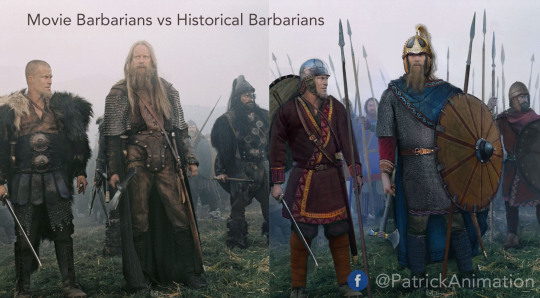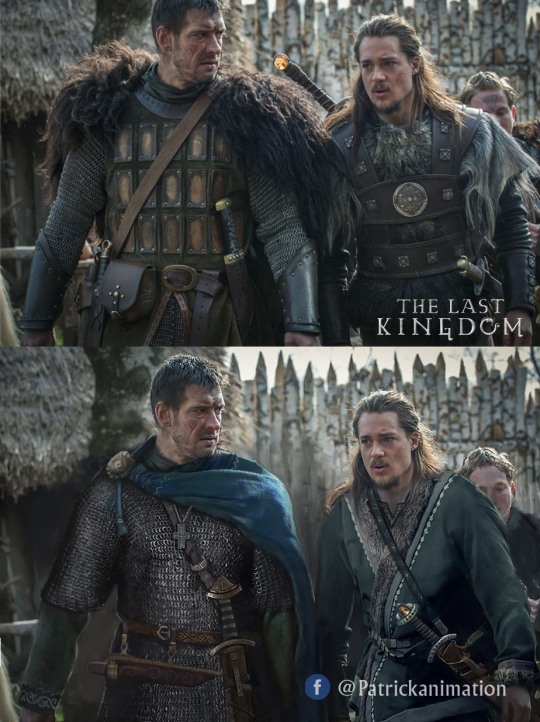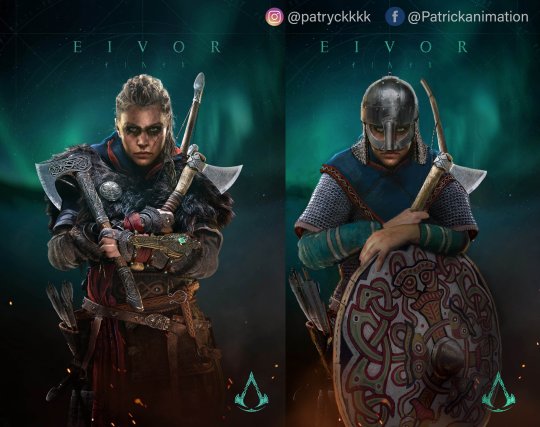Waiting another 10 years for KH4. This blog is a mess, all my interests combined
Don't wanna be here? Send us removal request.
Text
Seriously? Dude, that's something you'd seen in the basement. But not made of chocolate
37K notes
·
View notes
Text
while everyone's rightfully talking about oppenheimer and its flaws regarding the erasure of japanese and native american voices regarding nuclear testing and detonations, i'd like to bring up the fact that pacific islanders have also been severely impacted by nuclear testing under the pacific proving grounds, a name given by the US to a number of sites in the pacific that were designated for testing nuclear weapons after the second world war, at least 318 of which were dropped on our ancestral homes and people. i would like if more people talked about this.
important sections are bolded for ease of reading. i would appreciate this being reblogged since it's a bit alarming how few people know about this.
--
in 1946, the indigenous peoples of pikinni (the bikini atoll) were forcibly relocated off of their islands so that nuclear tests could be run on the atoll. at least 23 nuclear bombs were detonated on this inhabited island chain, including 20 hydrogen bombs. many pasifika were irreversibly irradiated, all of them were starved during multiple forced relocations, and the island chain is still unsafe to live on despite multiple cleanup attempts. there are several craters visible from space that were left on the atoll from nuclear testing.
the forced relocation was to several different small and previously uninhabited islands over several decades, none of which were able to sustain traditional lifestyles which directly lead to further starvation and loss of culture and identity. there is a reason that pacific islanders choose specific islands to inhabit including access to fresh water, food, shelter, cloth and fibre, climate, etc. and obviously none of these reasons were taken into account during the displacements.
200 pikinni were eventually moved back to the atoll in the 1970s but dangerous levels of strontium-90 were found in drinking water in 1978 and the inhabitants were found to have abnormally high levels of caesium-137 in their bodies.
--
i'm going to put the rest of this post under a readmore to improve the chances of this being reblogged by the general public. i would recommend you read the entirety of the post since it really isn't long and goes into detail about, say, entire islands being fully, utterly destroyed. like, wiped off of the map. without exaggeration, entire islands were disintegrated.
--
as i just mentioned, ānewetak (the eniwetok atoll) was bombed so violently that an entire island, āllokļap, was permanently and completely destroyed. an entire island. it's just GONE. the world's first hydrogen bomb was tested on this island. the crater is visibly larger than any of the islands next to it, more than a mile in diameter and roughly fifteen storeys deep. the hydrogen bomb released roughly 700 times the energy released during the bombing of hiroshima. this would, of course, be later outdone by other hydrogen bombs dropped on the pacific, reaching over 1000 times the energy released.
one attempt to clean up the waste on ānewetak was the construction of a large ~380ft dome, colloquially known as the tomb, on runit island. the island has been essentially turned into a nuclear waste dump where several other islands of ānewetak have moved irradiated soil to and, due to climate change, rising seawater is beginning to seep into the dome, causing nuclear waste to leak out. along with this, if a large typhoon were to hit the dome, there would be a catastrophic failure followed by a leak of nuclear waste into the surrounding land, drinking water, and ocean. the tomb was built haphazardly and quickly to cut costs.
hey, though, there's a plus side! the water in the lagoon and the soil surrounding the tomb is far more radioactive than the currently contained radioactive waste. a typhoon wouldn't cause (much) worse irradiation than the locals and ocean already currently experience, anyway! it's already gone to shit! and who cares, right, the only ""concern"" is that it will just further poison the drinking water of the locals with radioactive materials. this can just be handwaved off as a nonissue, i guess. /s
--
at least 36 bombs were detonated in the general vicinity of kiritimati (christmas island) and johnson atoll. while johnson atoll has seemingly never been inhabited by polynesians, kiritimati was used intermittently by polynesians (and later on, micronesians) for several hundred years. many islands in the pacific were inhabited seasonally and likewise many pacific islanders should be classified as nomadic but it has always been convenient for the goal of white supremacy and imperalism to claim that semi-inhabited areas are completely uninhabited, claimable pieces of terra nullius.
regardless of the current lack of inhabitants on these islands, the nuclear detonations have caused widespread ecological damage to otherwise delicate island ecosystems and have further spread nuclear fallout across the entirety of the pacific ocean.
--
while the marshall islands, micronesia, and the surrounding areas of melanesia and polynesia were (and still are) by far the worst affected by these atrocities, the entirety of the pacific has been irradiated to some extent due to ocean/wind currents freely spreading nuclear fallout through the water and air. all in all, at least 318 nuclear bombs were detonated across the pacific. i say "at least" because these are just the events that have been declassified and frankly? i wouldn't be shocked to find out they didn't stop there.
please don't leave the atomic destruction of the pacific out of this conversation. we've been displaced, irradiated, murdered, poisoned, and otherwise mass exterminated by nuclear testing on purpose and we are still suffering because of it. many of us have radiation poisoning, many of us have no safe ancestral home anymore. i cannot fucking state this enough, ISLANDS WERE DISINTEGRATED INTO NONEXISTENCE.
look, this isn't blaming people for not talking about us or knowing the extent of these issues, but it's... insidiously ironic that i haven't seen a single post that even mentions pacific islanders in a conversation about indigenous voices/voices of colour being ignored when it comes to nuclear tests and the devastation they've caused.
5K notes
·
View notes
Photo

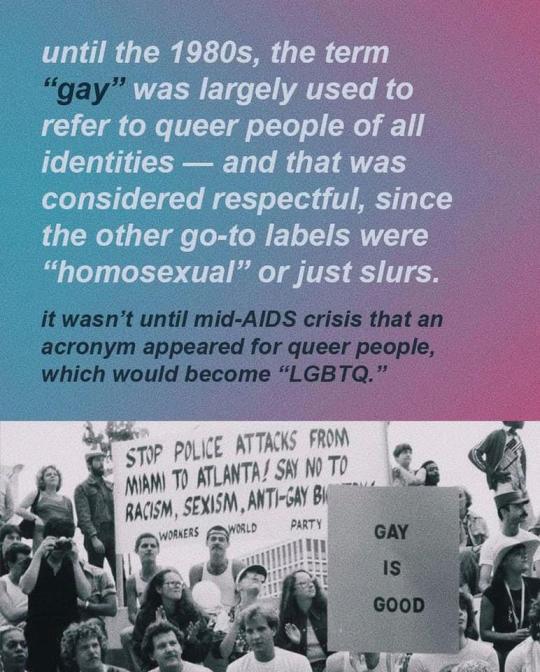
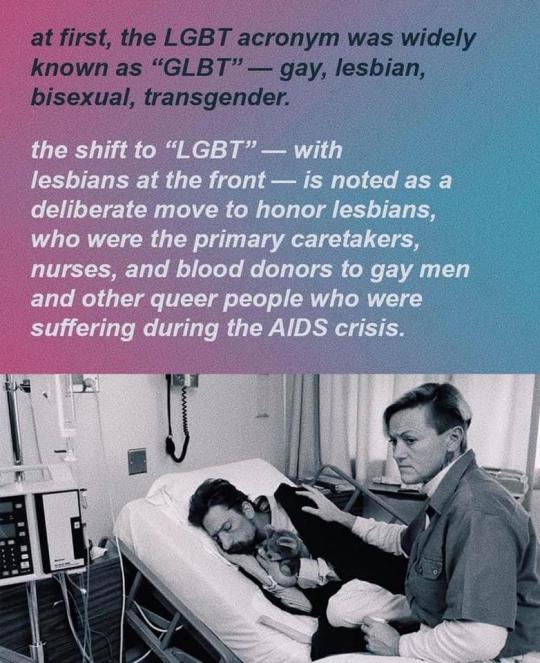
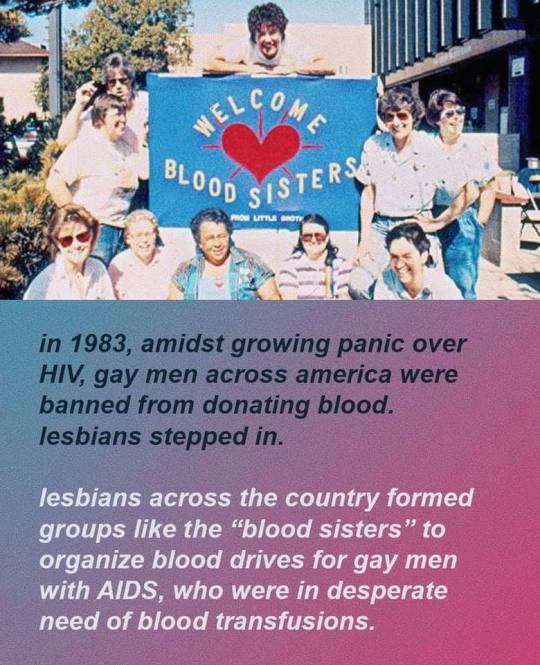
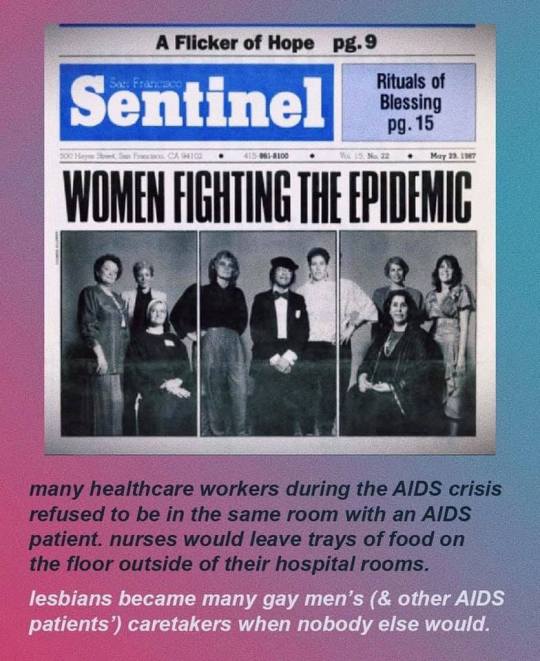

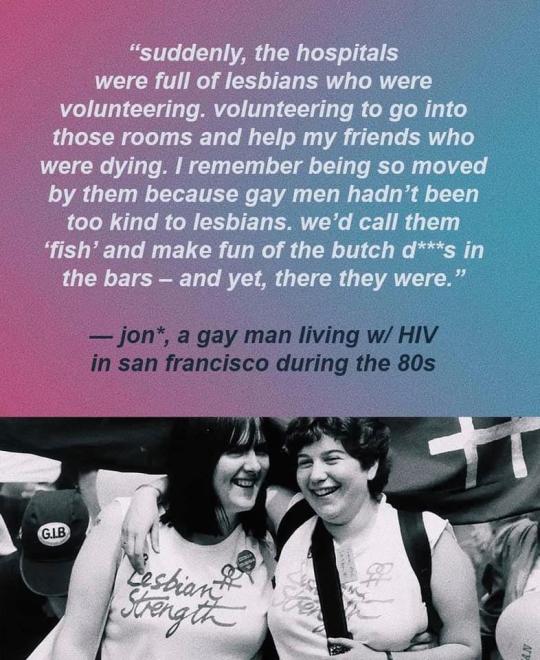


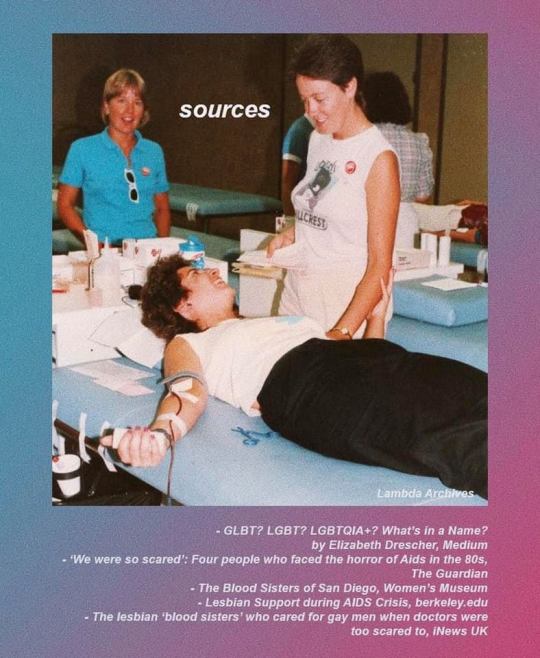
The LGBTQ community has seen controversy regarding acceptance of different groups (bisexual and transgender individuals have sometimes been marginalized by the larger community), but the term LGBT has been a positive symbol of inclusion and reflects the embrace of different identities and that we’re stronger together and need each other. While there are differences, we all face many of the same challenges from broader society.
In the 1960′s, in wider society the meaning of the word gay transitioned from ‘happy’ or ‘carefree’ to predominantly mean ‘homosexual’ and was an umbrella term that meant anyone who wasn’t cisgender or heterosexual. The community embraced the word ‘gay’ as a mark of pride.
The modern fight for queer rights is considered to have begun with The Stonewall Riots in 1969 and was called the Gay Liberation Movement and the Gay Rights Movement.
The acronym GLB surfaced around this time to also include Lesbian and Bisexual people who felt “gay” wasn’t inclusive of their identities.
Early in the gay rights movement, gay men were largely the ones running the show and there was a focus on men’s issues. Lesbians were unhappy that gay men dominated the leadership and ignored their needs and the feminist fight. As a result, lesbians tended to focus their attention on the Women’s Rights Movement which was happening at the same time. This dominance by gay men was seen as yet one more example of patriarchy and sexism.
In the 1970′s, sexism and homophobia existed in more virulent forms and those biases against lesbians also made it hard for them to find their voices within women’s liberation movements. Betty Friedman, the founder of the National Organization for Women (NOW), commented that lesbians were a “lavender menace” that threatened the political efficacy of the organization and of feminism and many women felt including lesbians was a detriment.
In the 80s and 90s, a huge portion of gay men were suffering from AIDS while the lesbian community was largely unaffected. Lesbians helped gay men with medical care and were a massive part of the activism surrounding the gay community and AIDS. This willingness to support gay men in their time of need sparked a closer, more supportive relationship between both groups, and the gay community became more receptive to feminist ideals and goals.
Approaching the 1990′s it was clear that GLB referred to sexual identity and wasn’t inclusive of gender identity and T should be added, especially since trans activist have long been at the forefront of the community’s fight for rights and acceptance, from Stonewall onward. Some argued that T should not be added, but many gay, lesbian and bisexual people pointed out that they also transgress established gender norms and therefore the GLB acronym should include gender identities and they pushed to include T in the acronym.
GLBT became LGBT as a way to honor the tremendous work the lesbian community did during the AIDS crisis.
Towards the end of the 1990s and into the 2000s, movements took place to add additional letters to the acronym to recognize Intersex, Asexual, Aromantic, Agender, and others. As the acronym grew to LGBTIQ, LGBTQIA, LGBTQIAA, many complained this was becoming unwieldy and started using a ‘+’ to show LGBT aren’t the only identities in the community and this became more common, whether as LGBT+ or LGBTQ+.
In the 2010′s, the process of reclaiming the word “queer” that began in the 1980′s was largely accomplished. In the 2020′s the LGBTQ+ acronym is used less often as Queer is becoming the more common term to represent the community.
87K notes
·
View notes
Text
Brief mythological (and historical) dictionary of 'Irati'
@asongofstarkandtargaryen @queenmiriamele @luceirosdegolados @isadomna
Irati is a compendium of Basque mythology, it involves a review of many of its main figures, focusing on the "regent" of all creatures, the goddess Mari, embodied in the film by the actress Itziar Ituño. The filmmaker confesses that "many more" creatures appear in feature films than one is capable of perceiving, not in vain has he "played" to blur the lines between some mythological beings and others and to "mix". In an exercise of synthesis of the oral tradition, to which scholars such as the priest and anthropologist Joxe Miel Barandiaran dedicated a large part of their work, and with the desire to contextualize the spirit of Irati and the myths that through her gain new life, we offer you a small glossary of creatures, men and facts.
Aker: The goat is one of the beings that is not exclusive to Basque mythology, but also belongs to other traditions and religions. It is associated with the goddess Mari due to its healing abilities, but it is also associated with witchcraft. Not surprisingly, the term akelarre refers to the cult in which akerbeltz was venerated, an animal that, according to Barandiaran, was raised in homes to prevent cattle from getting sick. In fact, Barandiaran refers to him as a protective divinity. In different oral traditions of the Basque Country, he lives in a cave with a snake and is the custodian of a treasure. However, the witch hunt, which in the case of the Basque Country was promoted by Pierre de Lancre in the 17th century, caused the cult of the goat to be associated with the devil.
Basajaun: Being a giant humanoid in shape and covered in hair that lives in the depths of the forest or caves. This numen is related to traditional trades, with livestock, agriculture and blacksmithing. Thus, Basajaun is in charge of scaring the wolves to prevent them from attacking the sheep, which announce its presence with the unison ringing of their cowbells. The fact that it is considered the origin of various trades refers to the myth of Prometheus, the titan who stole fire from the gods to give it to humans, an act for which he was severely punished. According to Barandiaran, Basajaun was the first farmer from whom men, through deceit, obtained the first seed. The Gipuzkoan priest and anthropologist also highlighted that he is considered the first blacksmith and the first miller and, just like what happened with the first seed, the human being also stole the secrets for the manufacture of the saw, the axis of the mill and metal welding. Due to its characteristics it is also considered a jentil.
Eneko Aritza: Eneko Enekoitz, nicknamed Aritza (the oak or the strong), was the first king of Pamplona. The Latin sources name him as Enneco Ennecones, while the Muslims call him Wannaqo ibn Wannaqo. In this second feature film by Urkijo, he is played by Eneko Sagardoy and, along with the character played by Edurne Azkarate (Irati), he is one of the film's protagonists. The Álava filmmaker presents an Eneko before being crowned –he reigned between the year 824 and 852–. His father, also called Eneko (in the film he is played by Iñigo Aranbarri), was one of the leaders of the peninsular Vasconia who ambushed Charlemagne in Errozabal, in a contest that Otsoa Lupus II led from continental Vasconia.
Gentil or jentil: Wild giants of immense strength that lived in mountains or caves and were capable of lifting and throwing large stones. The jentil name is found in a multitude of Basque place names throughout the country's orography. The cromlechs and dolmens are, according to oral tradition, vestiges of these pagan builders who came to live in harmony after the spread of Christianity.
Lamia: Beautiful woman who combs her hair with a golden comb. Although it is anthropomorphic in shape, its feet can be those of a duck, chicken, or goat. It can be found on the banks of rivers and usually requires offerings, generally food (wheat, cornbread, cider, curd or milk). He usually rewards those who give him offerings in various ways. The philosopher Andrés Ortiz-Osés, in his work The Mother Goddess, in which he reflects on the figure of the goddess Mari and her cohort, speaks of the lamias as half nymphs and half mermaids, alluding to Greek and Latin myths. In this sense, Barandiaran neatly collected the different perspectives from which these beings have been described, either as numenas that help in farming or as beings that kidnap men on a whim. The advent of oxen-drawn plows (that is, technology) and the proliferation of Christian hermitages brought about the disappearance of lamias.
Mari: Main goddess of the Basque pantheon and one of the central figures in the film Irati. Urkijo highlights the telluric character of the deity and represents her as Mother Earth herself. As in Paleolithic religions, cavities represent the womb of life and she lives there, in the depths of a cavern, although paying attention to Barandiaran, she tends to periodically change homes by jumping from one mountain to another. She is the mother of the rest of the creatures that make up our mythology and, as Ortíz Osés explains, the goddess Mari is "omniparent", that is, she is the origin of everything and, at the same time, everything is linked. It usually appears combing her hair, cooking or spinning. The four elements converge in it and can be the source of storms and droughts. She is often consulted as an oracle and also rewards those who believe in her. It can be conjured by throwing or stacking pebbles.
Orreaga or Errozabal: In recent years, especially as a result of the investigations carried out by Xabier Irujo, the battle of Orreaga (the researcher claims the place name Errozabal) which took place in the year 778 has acquired new interest. The director of the Center for Basque Studies at the University of Nevada, Reno (USA), after almost a decade of studies using the original sources in Latin, denied many of the legends that have come down to our days, the majority of Frankish origin and that they were written 50 years after the death of Charlemagne (in the year 814) and also the events of the Chanson de Roland.
Before becoming emperor, Charlemagne, king of the Franks, undertook a campaign to develop the Hispanic March, a crusade whose objective was to consolidate a kingdom in the Pyrenees that would act as a barrier to prevent the advance of the Muslim kingdoms, after the start of their invasion in 711. With this objective he conquered the peninsular Pyrenees, that is, Navarra, including Pamplona. After failing in the attempt to conquer Zaragoza, Charlemagne, accompanied by 20,000 men, withdrew to Iruñea and, after destroying it, began the return trip through Errozabal, following a wooded path that connected Auritz with Luzaide.
Due to the narrowness of the track, the men had to march in a line, forming a line of between eleven and fourteen kilometers. It was then when the union between continental and peninsular Basques attacked the neck of the army, behind where the treasure was marching, producing what is known as the battle of Orreaga or Errozabal and which brought the defeat of Charlemagne's army, who fled from the fight and took refuge in Herstal, Belgium.
Irati seeks to be faithful to the latest research but, by ascribing to the sword and sorcery genre in the style of Legend or Willow, Urkijo did not want to miss out on the fantastic options that the Chanson de Roland allows.
Sugaar: A male snake. In some areas of the country, such as Ataun, Sugaar is a being that crosses the sky forming a fiery sickle figure. His presence announces the approach of a great storm. In other places, such as Azkoitia or Zarautz, on the other hand, the snake is the son and lover of the goddess Mari, as well as being the one who combs her hair. When both come together the heavens roar.
Tartalo: One-eyed man-eating creature. He is related to his Greek counterpart, Polyphemus, the son of Poseidon who was blinded by Odysseus in the Odyssey. Tartalo, according to Barandiaran, may be a corrupted version of Basajaun. Very present in the oral tradition of the municipalities of Goierri, Tartalo kidnaps human beings to devour them in the cave that he uses as his home and in which he lives with his sheep.
Zezengorri: In Basque mythology there are several animal-shaped numenas that share characteristic red skin. In addition to Zezengorri (red bull), we can find others such as Beigorri (red cow) or Zaldigorri (red horse). In any case, they are spirits from the subsoil whose objective is the defense of said cavities.
29 notes
·
View notes
Text
Meanwhile, on Twitter:
Brain farts, a thread
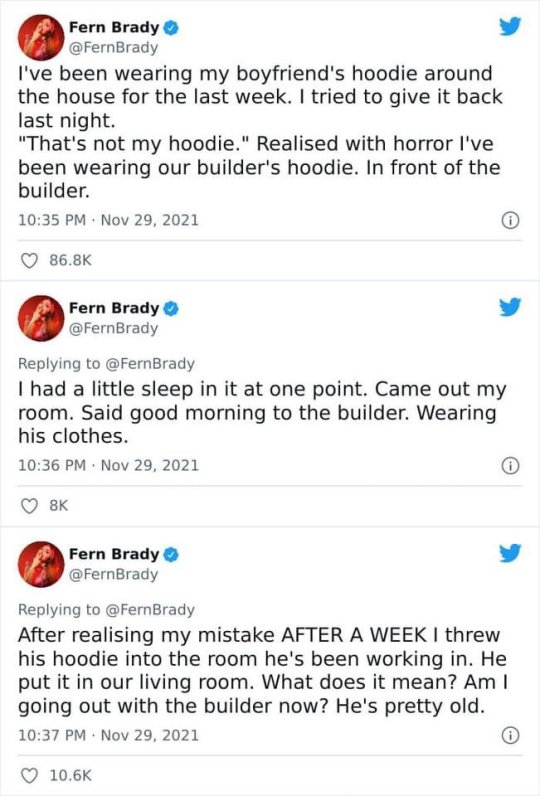

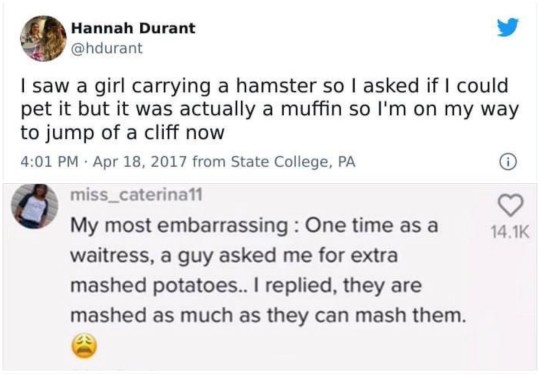
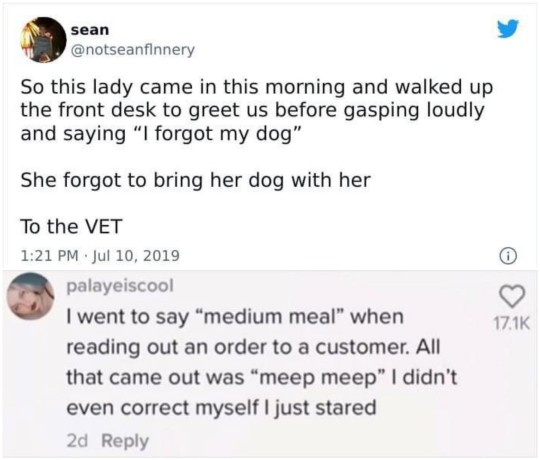






126K notes
·
View notes
Video
39K notes
·
View notes
Video
113K notes
·
View notes
Text
94K notes
·
View notes
Text
dude seeing these Mega high quality images of the surface of mars that we now have has me fucked up. Like. Mars is a place. mars is a real actual place where one could hypothetically stand. It is a physical place in the universe. ITS JUST OUT THERE LOOKING LIKE UH IDK A REGULAR OLD DESERT WITH LOTS OF ROCKS BUT ITS A WHOLE OTHER PLANET?
465K notes
·
View notes
Text
Now I understand Draco's obsession with jeans




She passed the familiar store fronts and came to the corner of Diagon Alley and Horizont Alley. She released the enchantments that Morty had placed the previous evening and opened up. It was a tiny store, but thousands of books were crammed in. It didn’t get nearly as busy as Flourish and Blotts, but Hermione liked the quiet.
The Right Thing to Do by @lovesbitca8, chapter 3
—-
Some sketching for Hermione in her natural habitat, a book store 📚💚
Digital drawings, do not repost or use without permission.
2K notes
·
View notes
